FERRO ALLOYS
| Element: | Calcium |
| Symbol: | Ca |
| Atomic number: | 20 |
| Atomic weight: | 40.08 |
| Density, 20 C (68 F): | 1.53 g/cm3 |
| Melting point: | 850 C (1562 F) |
| Boiling point: | 1350 C (2462 F) |

Calcium, as limestone, has always been a basic ingredient in iron and steelmaking. Its uses as a fluxing agent are well known. Treatment of liquid steel with calcium has become an important means of deoxidation and, more importantly, desulfurization to previously unthinkable levels. Equally significant is the now routine use of calcium to control the shape, size and distribution of oxide and sulfide inclusions. Benefits directly attributable to calcium treatment include greater fluidity, simplified continuous casting and improved cleanliness, machinability, ductility and impact strength in the final product. Calcium silicon, containing 28-35% Ca, 60-65% Si and 6% Fe, is the most commonly used addition agent. It may contain up to 1 % C and 1.5% Al. Availability all sizes powder
CaSiAl CaSiMn CaSiCe CaSiBa
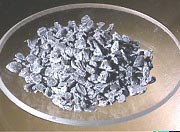
dia. 9 – 16 mm, containing CaSi or FeSiMg. Other fillings on request possible.
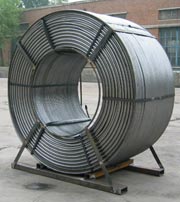
| Element: | Chromium |
| Symbol: | Cr |
| Atomic number: | 24 |
| Atomic weight: | 52.01 |
| Density, 20 C (68 F): | 7.1 g/cm3 |
| Melting point: | 1850 C (3362 F) |
| Boiling point: | 2680 C (4856 F) |
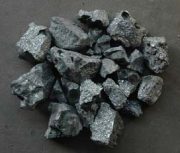
Chromium is one of the most versatile and widely used alloying elements in steel. It imparts corrosion and oxidation resistance, is a mild hardenability agent, improves wear resistance and promotes the retention of useful strength levels at elevated temperatures. Chromium is an irreplaceable constituent in all stainless steels: in fact, over 70% of all chromium used in steelmaking is found in the many stainless grades. Availability low carbon, medium carbon, high carbon powder
| Element: | Manganese |
| Symbol: | Mn |
| Atomic number: | 25 |
| Atomic weight: | 54.93 |
| Density, 20 C (68 F): | 7.44 g/cm3 |
| Melting point: | 1244 C (2271 F) |
| Boiling point: | 2095 C (3803 F) |
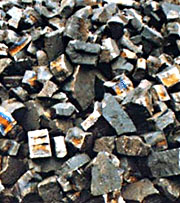
Manganese is intentionally present in most grades of steel and is a residual constituent of virtually all others. Aside from its historic importance as a desulfurizer and deoxidizer, manganese is undoubtedly the most prevalent alloying agent in steels, after carbon. Understandably, therefore, ferromanganese is the most widely used ferroalloy. Availability low carbon, medium carbon, high carbon powder
| Element: | Molybdenum |
| Symbol: | Mo |
| Atomic number: | 42 |
| Atomic weight: | 95.95 |
| Density, 20 C (68 F): | 10.22 g/cm3 |
| Melting point: | 2610 C (4730 F) |
| Boiling point: | 5560 C (10’040 F) |
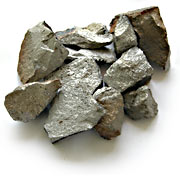
Molybdenum (often referred to as „moly“) has many important uses in alloy and stainless steels, alloy cast irons and superalloys. Moly is a potent hardenability agent and is a constituent of many heat treatable alloy steels. It retards softening at elevated temperatures and is therefore used in boiler and pressure vessel steels, as well as several grades of high speed and other tool steels. Molybdenum improves the corrosion resistance of stainless steels. Availability min. 60/65/70 %
lumps or briquettes
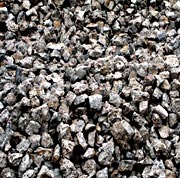
| Element: | Silicon |
| Symbol: | Si |
| Atomic number: | 14 |
| Atomic weight: | 28.09 |
| Density, 20 C (68 F): | 2.34 g/cm3 |
| Melting point: | 1412 C (2573 F) |
| Boiling point: | 2355 C (4270 F) |
Silicon, the second most abundant element in the Earth’s crust (25.7%), is present in virtually all steels, either as a residual from ore, scrap or deoxidants, or as an intentional addition.
Availability
- grains, briquettes
- inoculants for grey and nodular castings
- powder
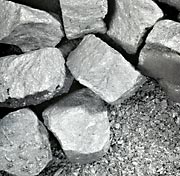
all sizes

| Element: | Magnesium |
| Symbol: | Mg |
| Atomic number: | 12 |
| Atomic weight: | 24.32 |
| Density, 20 C (68 F): | 1.74 g/cm3 |
| Melting point: | 650 C (1202 F) |
| Boiling point: | 1105 C (2021 F) |

Magnesium is essentially insoluble in solid steel and is not used as an alloying constituent per se. However, like calcium, magnesium is very useful as a desulfurizer, and large quantites have been consumed in steelmaking for this purpose. Magnesium is a powerful inoculant in cast iron. When added in concentrations exceeding 0.04%, it produces a spheroidal form of graphite that improves the iron’s strength and ductility.
Availability all grades powder
all grades all sizes
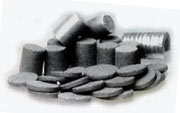
| Element: | Titanium |
| Symbol: | Ti |
| Atomic number: | 22 |
| Atomic weight: | 47.90 |
| Density, 20 C (68 F): | 4.51 g/cm3 |
| Melting point: | 1600 C (2912 F) |
| Boiling point: | 3260 C (5900 F) |
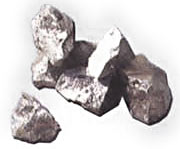
Titanium is highly reactive under steelmaking and processing conditions. It combines readily, and forms stable compounds, with carbon, oxygen, nitrogen and sulfur. Because of this property, it may be used to fix these elements, reducing or eliminatig their sometimes harmful effects. Titanium is also a grain refiner and is similar in many respects to aluminum. Availability min. 50/70 %
| Element: | Vanadium |
| Symbol: | V |
| Atomic number: | 23 |
| Atomic weight: | 50.95 |
| Density, 20 C (68 F): | 6.14 g/cm3 |
| Melting point: | 1890 C (3434 F) |
| Boiling point: | 3350 C (6060 F) |
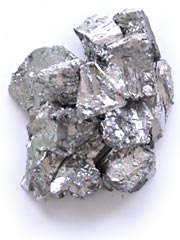
Widely used in many classes of alloy steels, vanadium promotes fine grain size, increases hardenability and improves wear resistance through the precipitation of its carbides and nitrides. Vanadium is also a constituent of a number of constructional and engineering alloy steels. Availability 80%
| Element: | Manganese |
| Symbol: | Mn |
| Atomic number: | 25 |
| Atomic weight: | 54.93 |
| Density, 20 C (68 F): | 7.44 g/cm3 |
| Melting point: | 1244 C (2271 F) |
| Boiling point: | 2095 C (3803 F) |
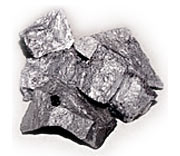
Silicomanganese contains 63-66% Mn, < 20% Si and 1.5, 2.0 or 3.0% C. Silicon and carbon contents are always inversely proportional. Silicomanganese has a higher deoxidizing power than ferromanganese and is frequently used as a furnace blocking addition. Availability all grades all sizes
